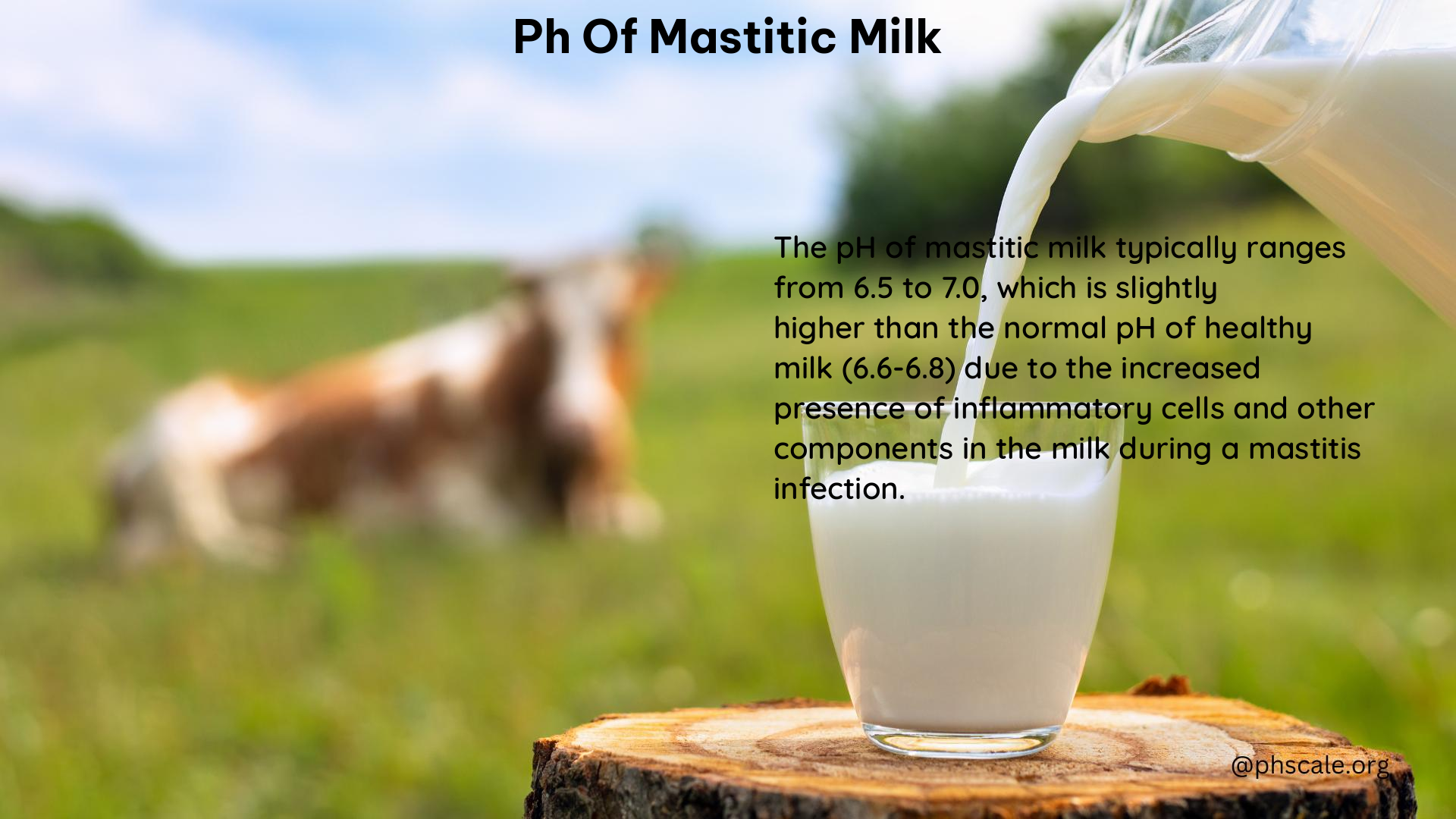The pH of mastitic milk is a crucial indicator of the severity of mastitis, a complex and multifactorial disease affecting dairy cattle. Mastitis leads to significant changes in milk composition, including alterations in pH levels. Understanding the pH range, factors affecting it, and the importance of maintaining a balanced pH in mastitic milk is essential for dairy farmers and veterinarians to effectively manage this prevalent issue.
pH Range of Mastitic Milk
The pH of mastitic milk is typically higher than that of healthy milk. Studies have shown that the pH of mastitic milk can range from 6.7 to 7.4, with an average pH of around 7.0. This increase in pH is associated with the severity of the inflammatory process and the presence of bacteria in the milk.
Factors Affecting pH of Mastitic Milk

Several factors contribute to the elevated pH of mastitic milk:
- Bacterial Infection: The presence of bacteria such as Staphylococcus aureus and Escherichia coli can increase the pH of milk by producing alkaline compounds.
- Inflammation: The inflammatory response to bacterial infection leads to the release of alkaline substances, further increasing the pH of milk.
- Changes in Milk Composition: Mastitis can alter the concentrations of various milk components, such as sodium, chloride, and lactose, which in turn affect the pH of milk.
Contaminants and Chemicals Present in Mastitic Milk
Mastitic milk often contains higher levels of certain contaminants and chemicals, including:
- Free Fatty Acids (FFA): Elevated levels of FFAs are common in mastitic milk, which can contribute to the development of off-flavors and off-odors.
- Sodium and Chloride: Increased concentrations of sodium and chloride ions can affect the pH and osmolality of milk.
- Lactic Acid: The presence of lactic acid can contribute to the acidity of milk, although this is less common in mastitic milk.
Balancing pH and Dealing with Contaminants
To balance the pH of mastitic milk and deal with contaminants, several strategies can be employed:
- Proper Milking Hygiene: Maintaining clean milking equipment and following proper milking procedures can help reduce bacterial contamination.
- Cooling and Storage: Cooling milk quickly and storing it at low temperatures can slow bacterial growth and reduce the formation of off-flavors and off-odors.
- Antibacterial Treatments: Applying antibacterial treatments, such as antibiotics or natural antimicrobials, can help control bacterial growth and reduce the severity of mastitis.
Helpful pH Quantity to Consume
Consuming milk with a pH close to the natural pH of healthy milk (around 6.6) is generally recommended. However, the exact pH threshold for safe consumption may vary depending on local regulations and individual tolerance.
History and Importance of pH in Mastitic Milk
The study of pH in mastitic milk dates back to the early 20th century, with researchers recognizing the importance of pH in diagnosing and managing mastitis. Today, pH testing remains a crucial tool in the diagnosis and monitoring of mastitis, helping dairy farmers and veterinarians to identify and treat infected cows more effectively.
References
- Study on pH and Somatic Cell Count in Milk of Sub-Clinical Mastitic Cows (2020) – ResearchGate
- Cumulative Effect of Subclinical Mastitis on Immunological and Biochemical Parameters in Milk (2022) – NCBI
- Acid Milk in Bovine Mastitis (1932) – Journal of Dairy Science
- Ability of Milk pH to Predict Subclinical Mastitis and Intramammary Infection (2019) – ScienceDirect
- Ability of Milk pH to Predict Subclinical Mastitis and Intramammary Infection (2018) – PubMed
